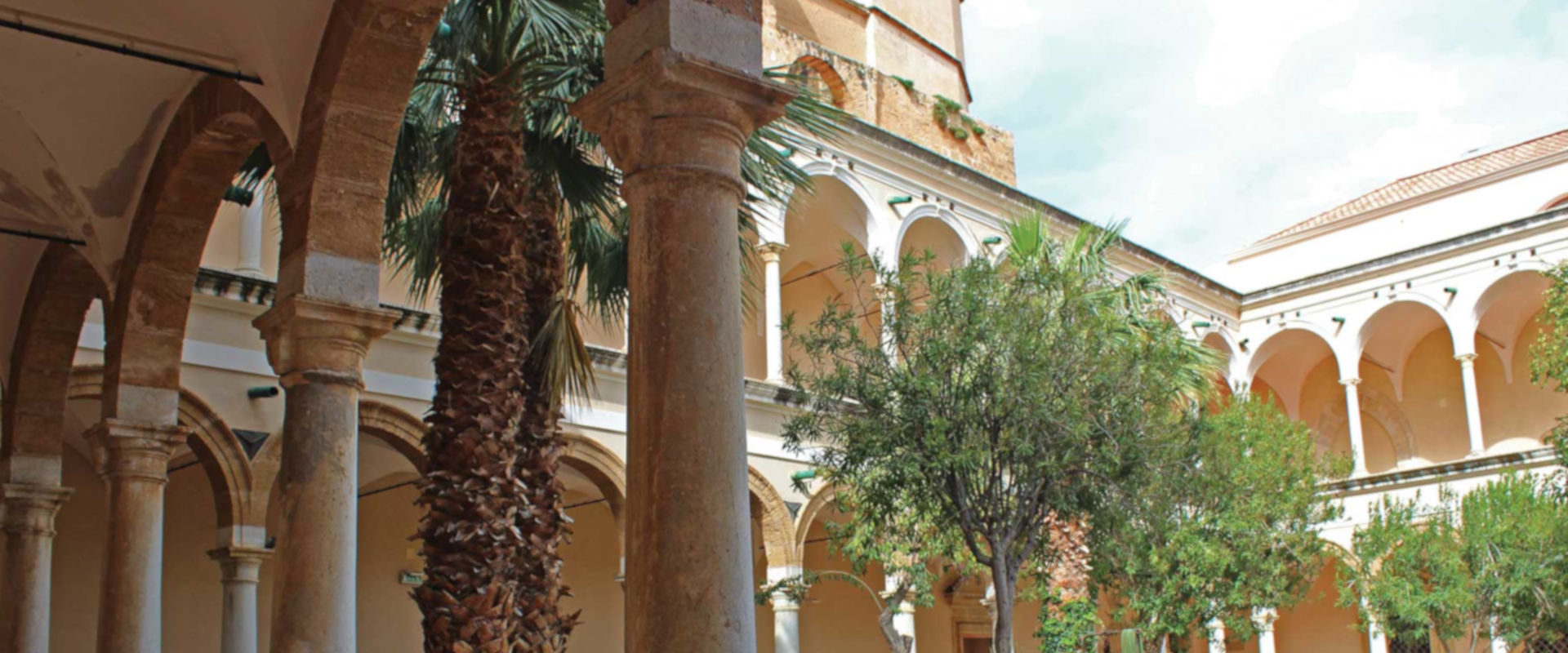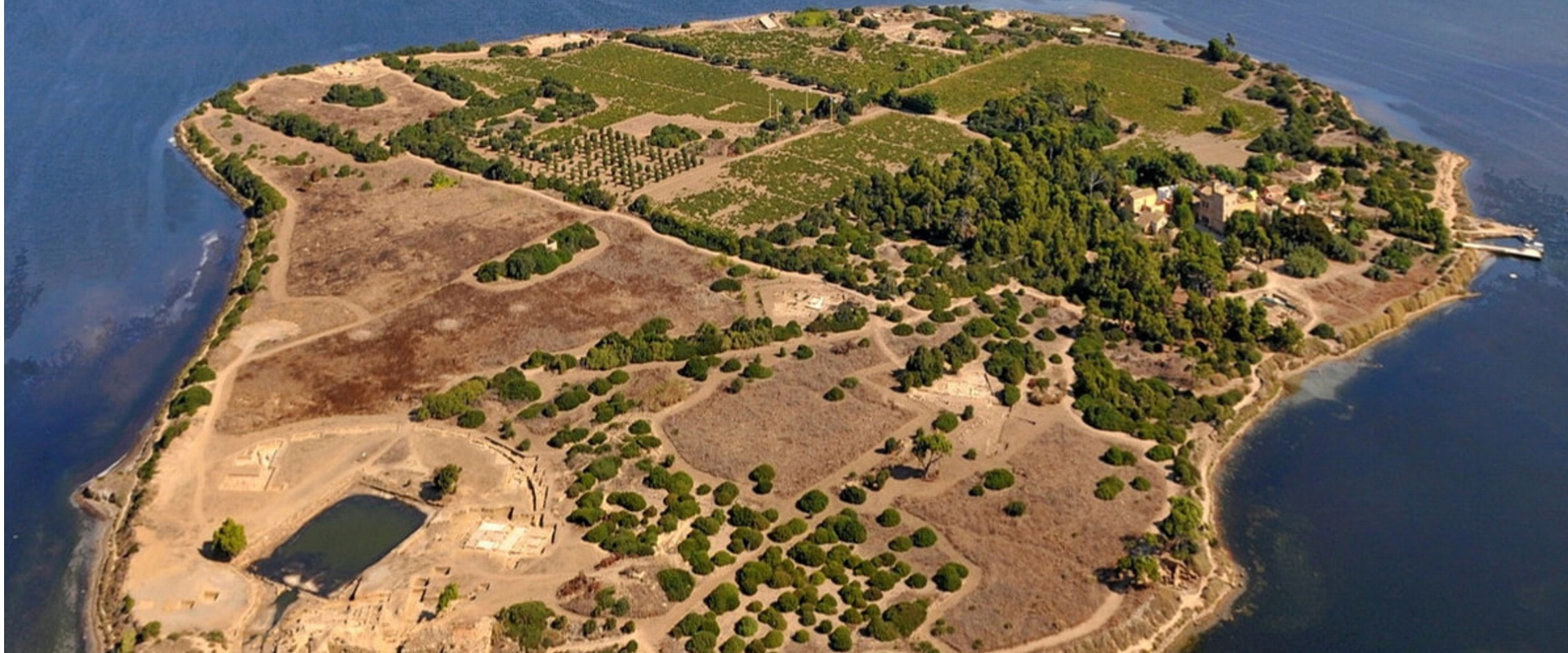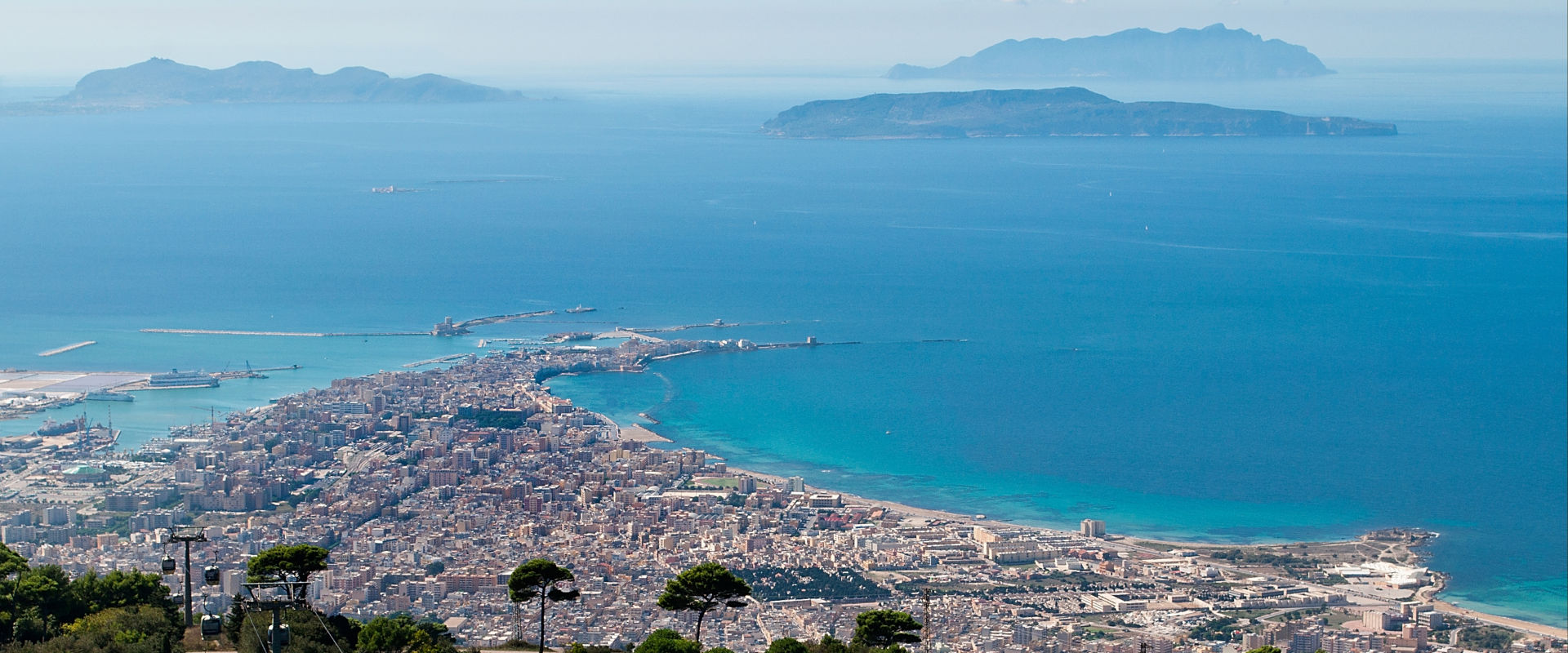Discovering the delicious
Trapanese cuisine
No trip can be complete without trying the traditional cuisine of the place you are visiting, and one of the most interesting aspects of Trapani is getting to know its flavours. Trapani’s cuisine is authentic and genuine, influenced by the culture and customs of the peoples who have occupied Sicily and these lands since ancient times. In fact, thanks to Arab and Norman, French and Aragonese influences, one can enjoy dishes and flavours that, even today, still manage to arouse ancient emotions and feelings.
Follow us on this gastronomic journey, wandering through the specialities of Trapani cuisine, which is sure to make your mouth water!
YOUR FREE GUIDE TO THE BEST RESTAURANTS IN TRAPANI
Gardens Mon Plaisir your ‘personal guide’
to discover West Sicily!
Typical Products
The Trapani area offers an extraordinary amount of excellent agri-food products ranging from ingredients used in the kitchen such as red garlic from Nubia, capers from Pantelleria Igp, sea salt from Trapani Igp and Valli Trapanesi Dop extra virgin olive oil, to excellent cheeses, especially Vastedda della Valle del Belìce Dop, which you can accompany with black bread from Castelvetrano. There is no shortage of DOC wines such as the famous Marsala wine, the white wine of Alcamo and the sweet Moscato di Pantelleria.
The undisputed protagonist of the table is fish and, in particular, tuna and the by-products of the latter’s organs: Trapani’s localities are in fact known for the traditional mattanza, an ancient method of tuna fishing developed in tuna fisheries. Tuna is also called ‘sea pig’ because, as with land-based tuna, nothing is thrown away. Tuna products include botargo, obtained from the eggs; lattume, obtained from the sac of the male tuna’s seminal fluid; tuna mosciame, obtained from the preparation of the lean fillet of dried yellowfin tuna; buzzunagghia, formed from those pieces of tuna that are close to the fins and therefore more sprinkled with blood; the ficazza, obtained from the dorsal parts of the tuna; the ventresca, which in Trapani is called ‘surra’, the most prized and tasty part of the tuna, because it is obtained from the ventral strips of the fish; and the heart, another delicacy with a processing similar to that of botargo. Another local fish excellence is the Gambero Rosso di Mazara del Vallo, one of the world’s most prized crustaceans. Characterised by its typical coral red colouring, it has an exquisite, strong taste with slightly sweet notes that stimulate the senses.
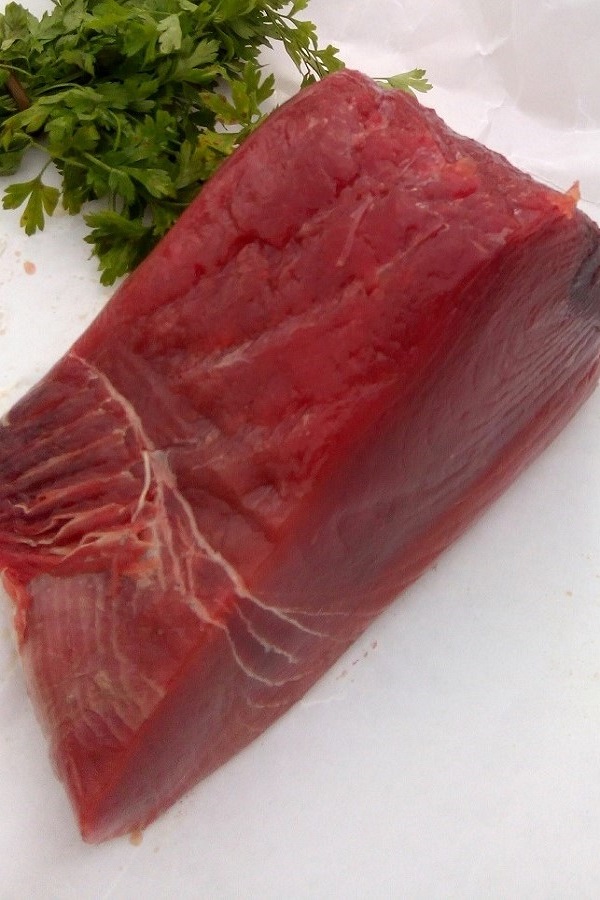

Typical Products
The Trapani area offers an extraordinary amount of excellent agri-food products ranging from ingredients used in the kitchen such as red garlic from Nubia, capers from Pantelleria Igp, sea salt from Trapani Igp and Valli Trapanesi Dop extra virgin olive oil, to excellent cheeses, especially Vastedda della Valle del Belìce Dop, which you can accompany with black bread from Castelvetrano. There is no shortage of DOC wines such as the famous Marsala wine, the white wine of Alcamo and the sweet Moscato di Pantelleria.
The undisputed protagonist of the table is fish and, in particular, tuna and the by-products of the latter’s organs: Trapani’s localities are in fact known for the traditional mattanza, an ancient method of tuna fishing developed in tuna fisheries. Tuna is also called ‘sea pig’ because, as with land-based tuna, nothing is thrown away. Tuna products include botargo, obtained from the eggs; lattume, obtained from the sac of the male tuna’s seminal fluid; tuna mosciame, obtained from the preparation of the lean fillet of dried yellowfin tuna; buzzunagghia, formed from those pieces of tuna that are close to the fins and therefore more sprinkled with blood; the ficazza, obtained from the dorsal parts of the tuna; the ventresca, which in Trapani is called ‘surra’, the most prized and tasty part of the tuna, because it is obtained from the ventral strips of the fish; and the heart, another delicacy with a processing similar to that of botargo. Another local fish excellence is the Gambero Rosso di Mazara del Vallo, one of the world’s most prized crustaceans. Characterised by its typical coral red colouring, it has an exquisite, strong taste with slightly sweet notes that stimulate the senses.
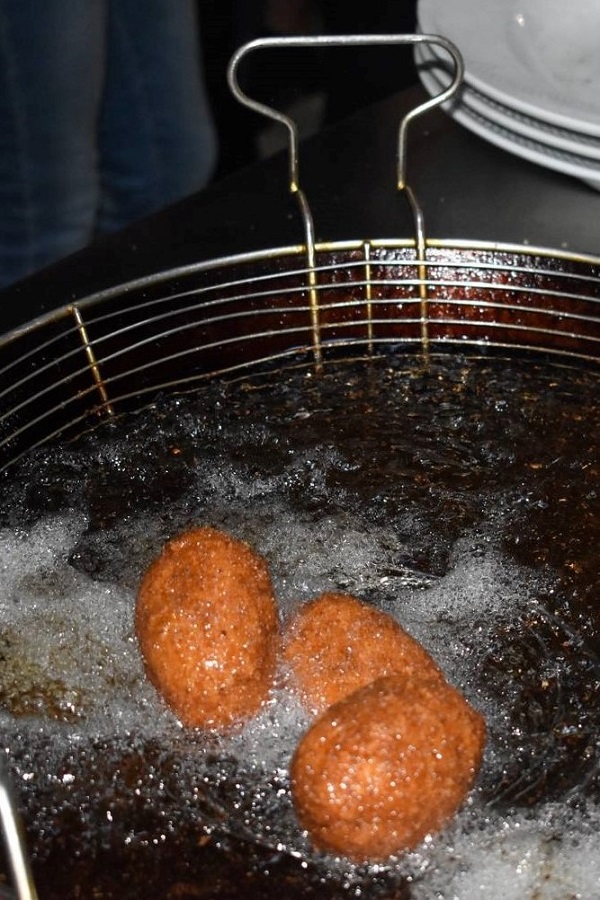
Specialities
One of Trapani’s best known and appreciated specialities is a dish of Arab origin, the famous cous cous, called cùscusu in the local dialect. The presence of cous cous in this part of the island stems from the frequent historical links that existed with Tunisia and Libya over the last two centuries. Listed as a traditional Sicilian food product, cous cous alla Trapanese is a dish made from durum wheat semolina to be enjoyed with fresh fish soup and has a very intense and spicy flavour. The traditional preparation is long and laborious and requires a certain skill that one learns ‘with the eyes’. Apart from fish, couscous is also made with broccoli or pork or duck. A festival is also dedicated to this delicious dish, the Cous Cous Fest, held every year in September in San Vito Lo Capo. Once in Trapani, it is impossible to leave the city without feasting on the famous arancine di riso (rice balls), to be tasted in many delicious flavour variations.
Starters & Main Courses
Among the first courses, get ready to make your taste buds explode with pleasure with ‘pasta cu l’agghia‘, i.e. pasta with Trapanese pesto, a tasty condiment made with almonds, basil, olive oil, fresh tomatoes and lots and lots of garlic. This delicious sauce is traditionally used to season busiate, a kind of traditional maccheroni from Trapani that is twisted to create the classic hollow spiral shape in the centre. Also worth trying are the pasta with red tuna ragout, pasta with fresh sardines, pasta in lobster broth and spaghetti with tuna roe.
Among the main courses many fresh fish recipes such as: the ‘tunnina ammarinata’“tuna with sweet and sour onions; the ‘surra“(tuna belly) grilled; the baby meatballsfresh blue fish; and the ghiotta marinaraa fish and seafood soup. If you are a meat lover, you must try: ‘nvultina a trapanisa‘, veal rolls stuffed with grated pecorino cheese, chopped parsley and garlic, breadcrumbs, salt and oil; and the pasqualora sausage, with its intense, unique and special flavour, to be eaten raw or grilled.
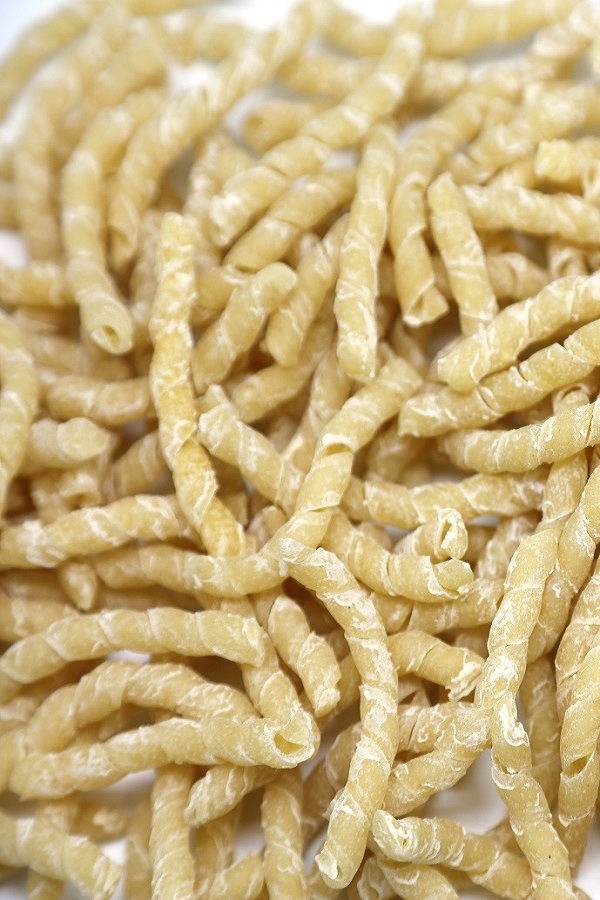

Starters & Main Courses
Among the first courses, get ready to make your taste buds explode with pleasure with ‘pasta cu l’agghia‘, i.e. pasta with Trapanese pesto, a tasty condiment made with almonds, basil, olive oil, fresh tomatoes and lots and lots of garlic. This delicious sauce is traditionally used to season busiate, a kind of traditional maccheroni from Trapani that is twisted to create the classic hollow spiral shape in the centre. Also worth trying are the pasta with red tuna ragout, pasta with fresh sardines, pasta in lobster broth and spaghetti with tuna roe.
Among the main courses many fresh fish recipes such as: the ‘tunnina ammarinata’“tuna with sweet and sour onions; the ‘surra“(tuna belly) grilled; the baby meatballsfresh blue fish; and the ghiotta marinaraa fish and seafood soup. If you are a meat lover, you must try: ‘nvultina a trapanisa‘, veal rolls stuffed with grated pecorino cheese, chopped parsley and garlic, breadcrumbs, salt and oil; and the pasqualora sausage, with its intense, unique and special flavour, to be eaten raw or grilled.
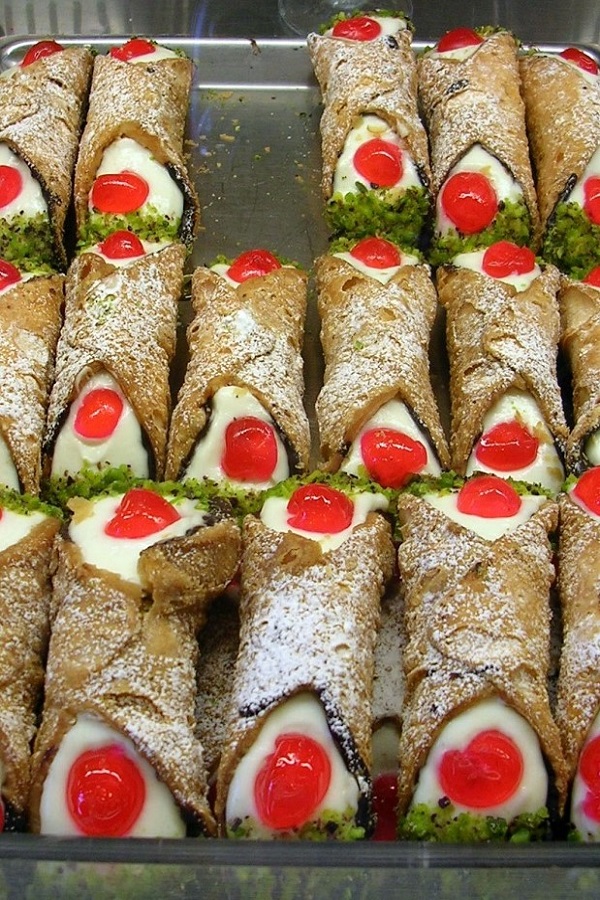
Sweets
Dulcis in fundo, a great variety of sweet specialities: a triumph of colours and shapes that knows no competition. Alongside the ever-present cannoli di ricotta, now a symbol of the whole of Sicily, there are Sicilian cassata, cassatelle di ricotta, almond paste, frutta martorana, granite and sfincioni di San Giuseppe. Erice, an enchanting medieval village a few kilometres from our boutique hotel and famous not only for its beauty but also for its pastry shops, where sweets are still prepared according to ancient convent recipes, deserves a separate mention. You cannot leave Sicily without trying the famous genovesi ericine, delicious short pastry cakes with a delicate custard inside and a dusting of icing sugar on top.
Did we make your mouth water? If you love the pleasures of good food, Trapani is the right city for you!



